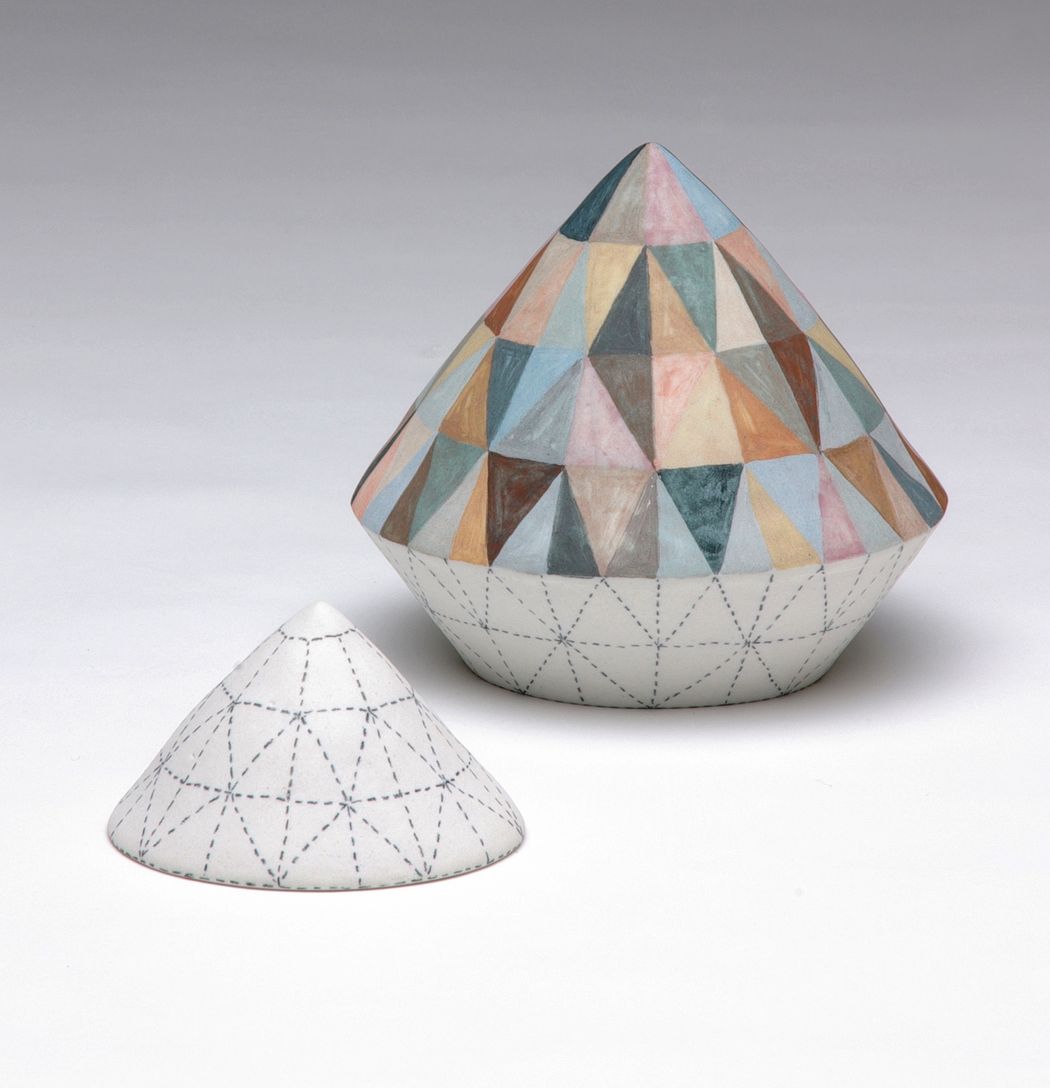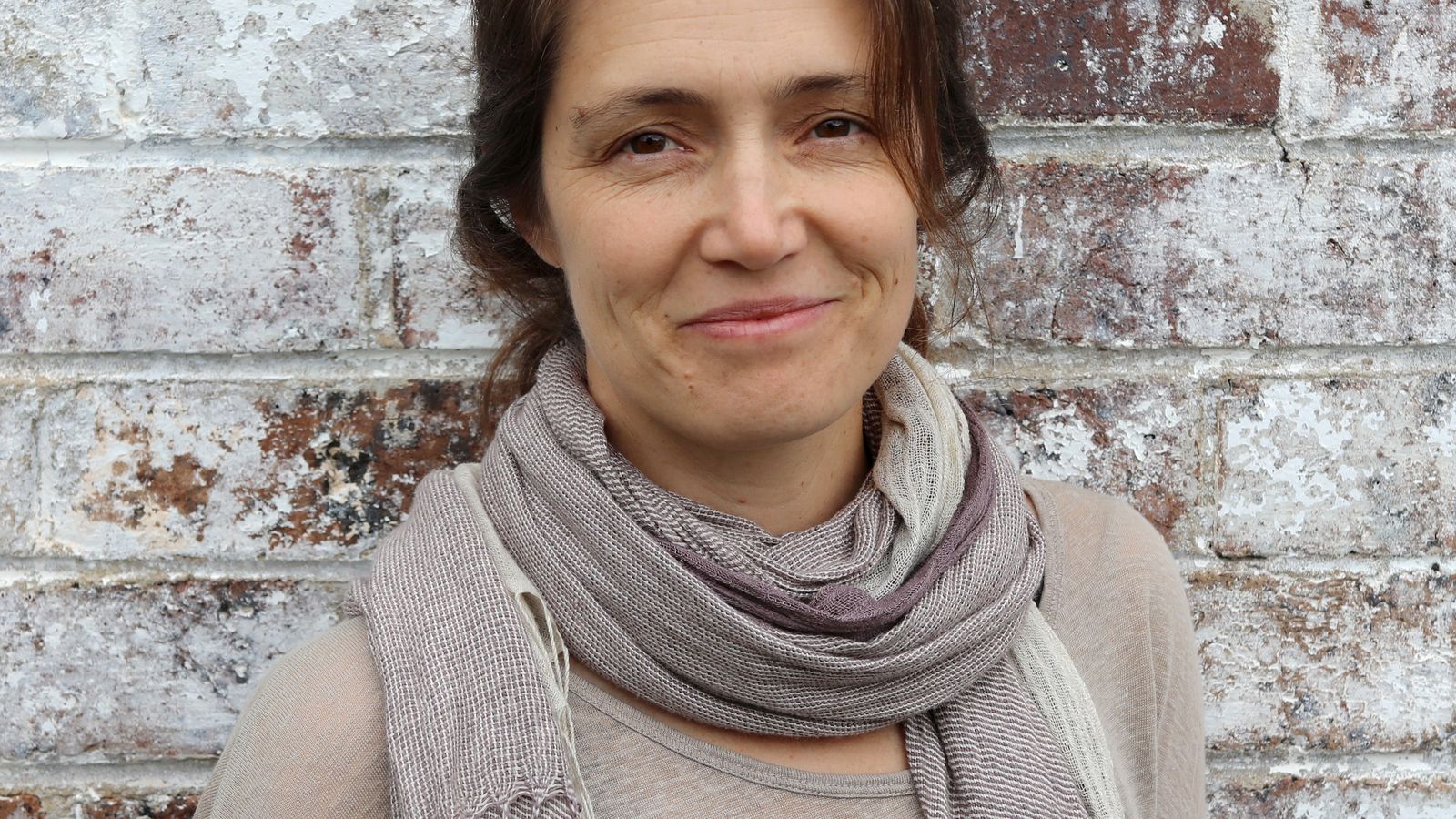How would you describe the type of work you make?
My work combines a strong interest in drawing, or mark making, with ceramics. A particular quality of line is probably my signature – a rather fragile, delicate line, which often contrasts with very simple, minimal forms.
What inspires your creative process and/or influences your approach to making work?
It feels like everything I have ever seen influences my work! I’m pretty sure that the saying “creativity is collage” is about right. In no particular order, my work is possibly a synthesis of: nature, modernism, Scandinavian design, Japanese ceramics, textiles with patterns (especially quilts), pattern in general, aboriginal art, growing up on a farm in Western Australia, studying graphic design, living in the Southern Highlands, and a whole ever-changing host of artists including Paul Klee, Joan Miró, Richard Tuttle, Philip Guston, Agnes Martin, Jurgen Partenheimer….
Poetry also shapes my approach. When I’m making, and particularly when I’m drawing, my creative process is largely intuitive. But intuition doesn’t always deliver quality - it just gets some stuff out there – so I think it’s important to be critical of what the process brings you. When I’m assessing the work, what I’m hoping for is my idea of a ‘poetic quality’ – the sense of condensed emotion, appropriate rhythm (or beautiful spaces) and a certain amount of mystery.
What do you like most about working with clay - what attracted you to the medium?
Conceptually, it’s the idea of time that I like in ceramics. Artist and theorist Paul Mathieu wrote that ceramic objects are humanity’s archive, which seems the best description of the art form to me. For almost as long as we humans have walked the earth we have scratched or printed our individual marks and traces into the malleable, receptive surface of clay, and we have formed it into objects that play intimate roles in our daily lives. Ceramics represents a chance for me to add my own speck-of-dust sized voice to this grand narrative, and a way to think about time.
On the practical side, I really do enjoy the physicality of ceramics; I take pleasure in all the work involved in all the various stages and find the physical activity of making a good contrast to the cerebral activity of drawing and painting on the surface.
Before moving into clay, you had a background in design. How has this background influenced your work?
My first degree was in Graphic Design but, after graduating, my employment in design lasted only six months. I knew I wasn’t going to be good with clients – I’m much too stubborn! However, I studied at Curtin University, which in the early 90’s had strong ‘Bauhaus style’ basic training in the elements and principles, so I’m certain that this foundation still influences many of the aesthetic decisions I make.
When you make work, do you have any particular audience in mind or are you interested in how people to respond to your work?
I don’t have any particular audience in mind when I make - I always get a surprise when people are interested at all! I just make whatever I’m curious about making at the time.
I like hearing people’s responses, though. I deliberately make marks that are ambiguous, in an attempt to leave the work open so that viewers can find their own way in. So it’s interesting to hear what they see, I always feel it has failed a bit if the interpretation is unanimous!
You have developed an international audience – how did you do this?
I’m not good with social media (no Facebook, blog or Pinterest, and embarrassingly infrequent Instagram use), but I’ve always maintained a basic website. My actual physical works have only rarely been exhibited overseas, but the images I have taken of the work, and have put on my website over the years have certainly circulated far and wide! A couple of blog posts in the early days of blogs probably started things off, and then Pinterest led to high circulation of my images when that came along.
So, I think if I have had some success in developing international interest, it has perhaps just been because the graphic quality of my work reproduces well on the web - as opposed to, say, subtle qualities of glaze and clay interaction. And I’ve been at this quite a while….it has taken years! Long before the web was passing zillions of images before our eyes every day I had time to develop my own visual language, free from distraction, so maybe that helped too..
You would you describe your studio and your studio time?
My studio is my favourite place on earth, and studio time is the most precious time in the week!
As an artist, education (being a teacher) has also been a big part of supporting your practice. Does your teaching influence or impact on your creative process?
Yes, it’s been hugely influential. The creative environment of the National Art School, and my interactions with colleagues and students constantly challenges me to ask more of my self and my work. Being around artists helps you to stick at it when the going gets tough! Secure and well-paid employment has also given me incredible freedom to pursue all kinds of obscure interests free from financial pressures.
On the flip side, teaching takes a lot of energy - my teaching days leave me physically completely drained (especially as I have a long commute). Mentally, teaching demands a complete shift of focus every week, and I always return to the studio distracted. So, on the whole, it slows the immediate progress of my work whilst also supporting and enabling it!!
Interview by Cath Fogarty, curator of Clay Intersections
Watch a video about Tania Rollond
Explore the exhibition Clay Intersections
Image: Uncertain object 24, 2016. Image courtesy of the artist.


